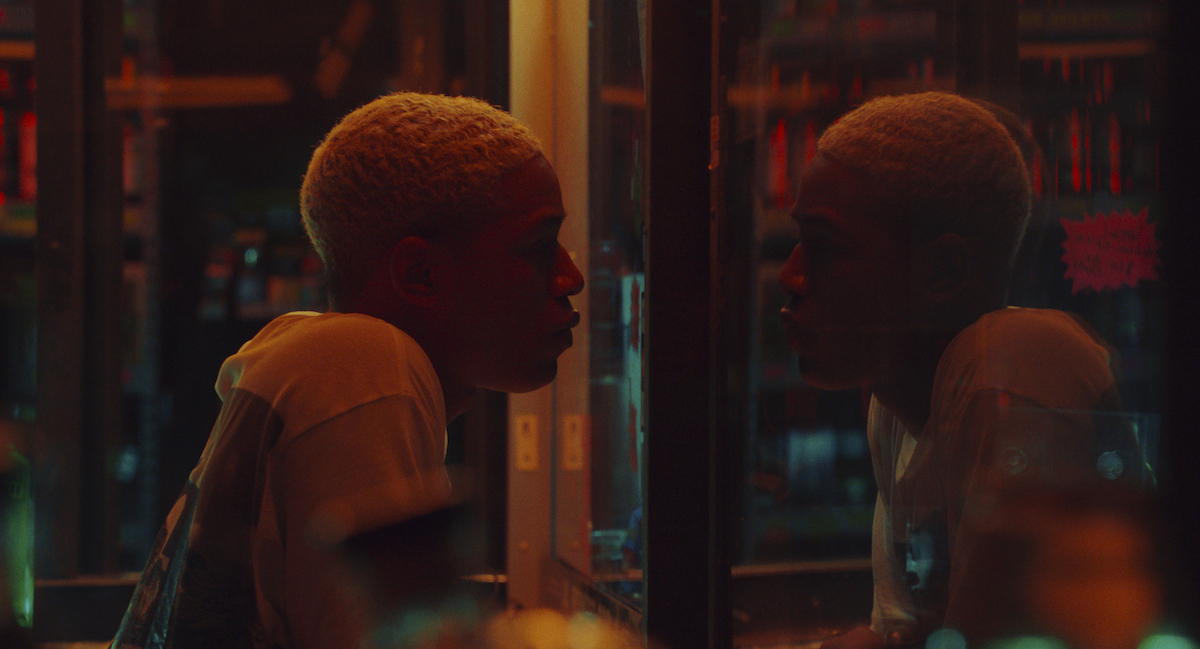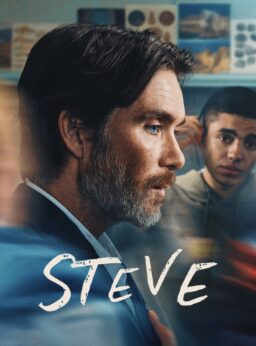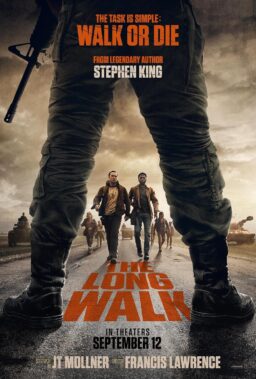Few moviegoing experiences in 2019 have gripped me quite like “Waves,” Trey Edward Shults’ third feature effort as writer/director. His first two films, 2015’s “Krisha” and 2017’s “It Comes At Night,” were meticulously nuanced gems that played like slow-burn horror films, as the characters’ inner demons threatened to sever their connection from one another. The same could be said about the first half of “Waves,” which charts with excruciating precision the downward spiral of Tyler (Kelvin Harrison Jr., the gifted star of Julius Onah’s powerful and polarizing drama, “Luce”), whose efforts to live up to the lofty expectations of his strict father, Ronald (Sterling K. Brown), are gradually upended by the cruel turns of life. Drew Daniels’ brilliant cinematography forges an impeccable duet with the visceral score by Trent Reznor and Atticus Ross, illustrating how the world has begun closing in on Tyler, alienating him from his family as well as his girlfriend, Alexis (Alexa Demie of HBO’s “Euphoria”).
Halfway through, the film abruptly—and sublimely—shifts its focus toward the character of Tyler’s younger sister, Emily (Taylor Russell, a flat-out revelation), as she grapples with the tragedy that has befallen her family, while gradually entertaining the advances of a smitten peer, Luke (Lucas Hedges, delivering his most endearing work since “Lady Bird”). The eye contact and careful attention they give to one another provides a stark contrast to the tense interactions between Tyler and Alexis marred by a reliance on texts, which provide a barrier to uncomfortable intimacy in times of crises. It’s during the film’s second hour that Shults beautifully portrays, for perhaps the first time ever, the rejuvenating power of hard-earned catharsis largely through the transcendent performance of Russell, whose smile lights up the screen. This picture is a masterful achievement on every level, and I was honored to chat with Shults, Russell and Harrison Jr. about it while they were in town for last month’s Chicago International Film Festival.
Though fluctuating aspect ratios have often proven to be a distraction, “Waves” makes the best use of them I’ve seen. The alterations in screen size function as chapter markers, signaling the moments when characters have moved to a different phase of their lives.
Trey Edward Shults (TS): Thank you! What you said was honestly the exact goal, and that’s actually something I haven’t mentioned yet. The aspect ratios are a bit like chapter markers and they happen at key moments in the character’s journey. In a broad stroke, it’s basically starting at 1.85:1 full frame, and as Tyler’s world is collapsing, the frame is closing in on him as well until we get down to 1.33:1 at the end of his story, when a tragedy has occurred. It’s such a beautiful ratio for faces. Once Emily starts taking over, the visuals are in shallow focus and consist of completely locked off, static frames, hopefully isolating the viewer in her world.
As Emily makes the choice to try opening herself back up to some new energy, it feels like a burden is being lifted off and we go inside her mind for a second. The frame switches to 2.40:1 as the world is opening back up, and by the end of the movie, it goes back to the 1.85:1 ratio that opened the film. This final change happens during a key moment that recalls an opening shot, but a lot of melancholy has now become attached to it. Even though the movie is looping back to the start, we are opening up and feeling hope in pushing forward, despite the inherent sense of melancholy. All of those shifts in aspect ratio were listed in the script at key parts in the characters’ journey, and it was very fun to play with.

Did Taylor and Kelvin remain focused on their characters’ respective halves of the narrative, as if they were making two separate pictures?
Taylor Russell (TR): We actually shot a lot of my stuff before Kelvin began making his half of the movie, so it never really felt like I was suddenly transitioning into my part. It didn’t feel like a big move for either of us, and though I did not pay attention to the first half, I wasn’t thinking about everything that happened in the story. I was obviously super-aware of Emily’s relationship with Tyler and thinking about that the entire time—just purely what happened between them—but it really did feel like we were separated.
Kelvin and I had talked a lot about what we wanted to convey in our relationship and what was really important to get across. We believe that these two characters’ souls are bound together. However, they’re obviously siblings, and there’s a lot of disconnect between them just from being teenagers. I think he’s a jerk, he thinks I’m annoying, and we’re both so young. But yeah, I think Kelvin and I are also like two sides of the same coin. We were actually born five days apart in the same year, so there are a lot of similarities that I feel were already there and we were able to pull from.
Was there any attempt for you to reflect each other’s behavior as siblings?
Kelvin Harrison Jr. (KH): I think it was more about understanding who our parents are, how they effect us, what we take from them, what we want to leave, and how we see each other because of that, how we might envy each other because of the differences in the relationships. So we really went in on discussing, “Who is dad? What is dad like? What’s dad to you, and what’s dad to me?” Certain things we kept a secret because, as siblings, we don’t share everything, but there was this really strong foundation of figuring out who’s leading this home, and how we fit into this space.
TR: And also, to add to that, Tyler is like a year or two older that Emily, and so much can happen in those two years as a child.
My sister is two years younger than me.
TR: So you know! My brother is two years older than me, and he saw a lot of stuff I didn’t see, even though it’s such a small age gap. I think that’s really important when considering how these siblings relate to one another. Tyler has seen more than Emily has, but they don’t necessarily talk about that, and both have endured a really hard childhood, which is reflected in who they are.
KH: There’s a protective element in her that sometimes, as an older sibling, you don’t have to think about as much. You’re kind of operating like the leader, saying, “Just follow me,” but Emily gets the opportunity to be very observant. She can see me in ways that I haven’t seen myself before, which leads to that beautiful scene in the bathroom. Sibling stuff is fun. [laughs]
TR: It’s fascinating!
How would you go about contrasting the characters of Tyler and Luce? Both are young men pushed to excel because, as Ronald notes, they are “not afforded the luxury of being average.”
KH: I think Ronald is speaking on behalf of the older generation about the struggles that they had to go through to get to where they are, how grateful they are for this moment and how they want to share it with the next generation. But they don’t understand that the information and the burden that they’ve been putting on these kids are sometimes too much. They’re 17, their parents didn’t like dealing with this burden when they were 17, but they had to deal with it anyway, and now they think that their children are reaping the benefits. Yet Ronald’s parents did this to their children so that the following generation could just be kids—so that they could just live and exist. They should have the freedom to be whomever they want to be.
Luce has a more articulate way of explaining that to his peers, his family and his teachers, but Tyler doesn’t have the words. All he knows is that he just wants to make his dad proud, and he wants his dad to love him. Tyler hasn’t been able to wrap his head around the question of his father’s love being conditional based on whether or not he can live up to Ronald’s expectations. Luce is in a completely different situation in the sense that the family he lives with aren’t even his biological parents. He doesn’t have that tie or that visual representation informing him that, ‘I am my father. I look at him and I look like him and I want to be him.’ In the case of Tyler and Ronald, that connection and that bond are so much stronger, so the stakes are incredibly higher.
I was so moved by Taylor’s portrayal of a nonjudgemental Christian whose faith takes shape not as an evangelism tool but in the very nature of her behavior, guiding Luke toward the light.
TS: That’s a good observation. For myself, it really just organically worked its way in there. It felt right. Growing up, I went to church pretty much every Sunday. My biological father was not quite “born again,” but almost. His life went off the rail, and when he found god, his life went off the rail again. My stepdad’s dad was a preacher, so there’s a lot of autobiographical elements in this story. When you see a lot of films that have anything to do with faith, it’s very much one kind of movie, and so I think having something that’s sort of natural and organic and nuanced was really interesting to me. I think your belief system and how you navigate that is a huge part of how you move through your life and grow and heal, and that’s a lot of what this movie is about. I think it’s what these characters needed to get to that place of healing, and I thought it would be really beautiful to hopefully have that arc feel earned. You go through some hard times, but then push through them in a way that feels authentic and deserved.

Emily seems to find personal catharsis through seeing herself reflected in Luke’s evolution.
TR: So much of that was already in the script. There are a lot of parallels between Emily and me. My grandpa was a preacher, and there are other particular instances where Emily’s life syncs up with my own. She is going through one of the biggest things that could happen to you in your life that doesn’t happen to everybody, and at the same time, she is at a tender age. Emily naturally cares about the people around her, and I don’t really know how I was able to portray that. I just tried to listen as much as I possibly could, and I put the focus on how the people around me are doing, what’s going on in their lives and how I can help make it better. I think if you are fully embodying that character, you also find yourself having those same qualities in real life, perhaps because you cannot really act them.
I love that you mentioned “listening,” because that is such a crucial part of Emily’s character. Tyler’s coach yelling, “I want constant movement,” seems to inform much of the film’s first half, while the second half is characterized by a stillness after literally hitting the floor.
KH: For me, that first half of the film was about chaos too, because when you are constantly moving, you are never taking a moment to breathe. Tyler just keeps moving at a fast pace—like, boom boom boom—and he’s out of breath by the end of it, to the point where, in the middle of the film, his breath is taken away. From an acting perspective, it just helped me to remain in the mentality of it all, staying in this place of, ‘I can’t figure it out, I don’t know what to do. I have so many thoughts and am overthinking, while just feeling chaotic.’
TS: Kelvin and I talked a lot about how everything feels as if it’s happening so fast for Tyler. His world is collapsing so fast that he almost doesn’t even have time to do anything past just react. Every day, he’s just trying to pull it together as best as he can. All these complications go against how his world has been built up for so long, the sort of structural support system that he has utilized in the past, and a lot of the control that he has in certain aspects of his life. So it was kind of about momentum, and I’ve seen this type of situation happen. I’ve had moments in my life where things have derailed very fast, or I’ve seen loved ones whose lives started to fall apart in a matter of weeks.
I wanted to portray that speed and make that mounting sense of anxiety feel honest in its pace and tone, magnifying how it all must feel for Tyler at this time in his life. It’s like he doesn’t even have enough time to think, he’s just reacting. On the flip side is Emily, who has nothing but time to think. She’s on the other side of this giant tragedy. Her life has suddenly stopped around the same time that school has literally come to an end. Now it’s summer, and her journey is largely an internal one, as she grapples with where she’s at in her grief, how to navigate it and grow from that. As a director, it was about being honest to that feeling emotionally and tonally, while exploring how these kids have dealt with traumatic experiences. I also think life can often work like that. It can be boom boom boom, and then it’s stasis that you are trying to pull out of a bit.
You’ve found an unconventional way of having the stories wrap up and come together at the end, avoiding the sort of third act confrontation we’d typically expect.
TS: At its core, the movie was always about the connectivity between all of us even when we are not together as human beings or in the case of these characters. It was my hope to visually convey that sense of connection. Just because a certain character does not go to see another character at the end of the movie, which is what you might expect in this kind of dynamic, doesn’t mean that a big internal shift toward forgiveness isn’t happening within that person. Just because they aren’t together doesn’t mean they aren’t close. That sort of spiritual connectivity and transference was really, really cool to me. I had always thought that if this character needs to go see that other character at the end of the movie, then we had failed. There is something more powerful in feeling it without having to go physically there. Feeling this connection between all of us in our separate moments affirms how much we need each other.
Header caption: Kelvin Harrison Jr. in Trey Edward Shults’ “Waves.” Courtesy of A24.












